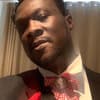Podcast
Questions and Answers
What happens to muscle and organ cells after the age of 30?
What happens to muscle and organ cells after the age of 30?
- They remain unchanged.
- They begin to grow in size.
- They tend to be lost. (correct)
- They regenerate at a faster rate.
What is a common change observed in older adults' physical appearance?
What is a common change observed in older adults' physical appearance?
- Enhanced muscle mass.
- Increased height.
- Loss of height. (correct)
- More vibrant skin texture.
What percentage of brain weight loss is typical for adults between ages 20 and 90?
What percentage of brain weight loss is typical for adults between ages 20 and 90?
- 5 to 10 percent. (correct)
- 1 to 2 percent.
- 15 to 20 percent.
- Over 20 percent.
Which cognitive function is most likely to be affected by the aging brain?
Which cognitive function is most likely to be affected by the aging brain?
What change occurs in the brain's physical structure as people age?
What change occurs in the brain's physical structure as people age?
How do the movements of older adults generally compare to younger adults?
How do the movements of older adults generally compare to younger adults?
What changes often accompany menopause in women during late adulthood?
What changes often accompany menopause in women during late adulthood?
Which reflex is commonly diminished in older adults by age 90?
Which reflex is commonly diminished in older adults by age 90?
What effect does aging have on the lateralization of brain function in older adults?
What effect does aging have on the lateralization of brain function in older adults?
What is a significant factor that can accelerate the effects of aging on the immune system?
What is a significant factor that can accelerate the effects of aging on the immune system?
At what age do most individuals begin to experience gradual losses in their sensory systems?
At what age do most individuals begin to experience gradual losses in their sensory systems?
What is a common misconception regarding hearing loss in older adults?
What is a common misconception regarding hearing loss in older adults?
Which sensory capability is least likely to be affected by aging?
Which sensory capability is least likely to be affected by aging?
How does physical exercise influence the immune system in older adults?
How does physical exercise influence the immune system in older adults?
Which of the following changes is not typically associated with aging?
Which of the following changes is not typically associated with aging?
What is the relationship between malnutrition and the immune system in older adults?
What is the relationship between malnutrition and the immune system in older adults?
Flashcards are hidden until you start studying
Study Notes
Characteristics of Old Age
- Post age 30, individuals typically experience loss of lean tissue and function in muscles, liver, kidney, and other organs.
- Tissue loss results in decreased body water content and reduced bone density due to mineral loss.
- Aging leads to decreased physical abilities, including loss of height, vision, and hearing impairments, alongside cardiovascular decline.
- Sleep disturbances become more common in old age.
- Menopause in women and erectile dysfunction in men mark significant sexual changes, impacting frequency of intercourse.
Physical Appearance and Movement
- Older adults exhibit slower movement in a variety of tasks, including everyday activities like reaching, grasping, and locomotion.
- Movement speed in older individuals is generally reduced compared to their younger years.
The Aging Brain
- The brain may lose 5-10% of its weight between ages 20 and 90, with studies showing an average brain volume reduction of 15% in older adults.
- Reasons for brain volume reduction may include decreased dendrites, myelin sheath damage, or brain cell death, though normal aging typically does not involve significant brain cell loss.
- A general decline in brain function begins in middle adulthood and accelerates during late adulthood, affecting both coordination and cognitive performance.
- Reflexes decrease notably with age; knee reflexes may disappear after 70, and by 90, most reflex actions slow significantly.
The Adapting Brain
- The aging brain retains remarkable repair capabilities; it adapts through changes in lateralization, where brain function specialization occurs less in older adults during cognitive tasks.
- Older adults often utilize both hemispheres of the brain for tasks that younger individuals primarily manage with one hemisphere, potentially compensating for age-related cognitive decline.
The Immune System
- Prolonged stress and diminished recovery in older adults can worsen immune function.
- Malnutrition, particularly low protein intake, correlates with a decrease in T cells, resulting in weakened immunity.
- Regular exercise is beneficial for enhancing the immune system's effectiveness in older adults.
Sensory Development
- Most sensory abilities—including vision, hearing, taste, smell, and touch—decline with age, typically beginning around age 50.
- Visual acuity, color vision, and depth perception tend to deteriorate; age-related eye diseases may also arise.
- Older adults may be unaware or in denial of their hearing difficulties, with more severe declines observed in those over 75 compared to those aged 65-74.
- Loss of sense of smell and taste often begins around age 60, impacting the overall sensory experience.
- Alterations in touch sensitivity and pain perception are also common in the aging process.
Studying That Suits You
Use AI to generate personalized quizzes and flashcards to suit your learning preferences.






